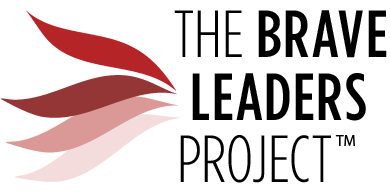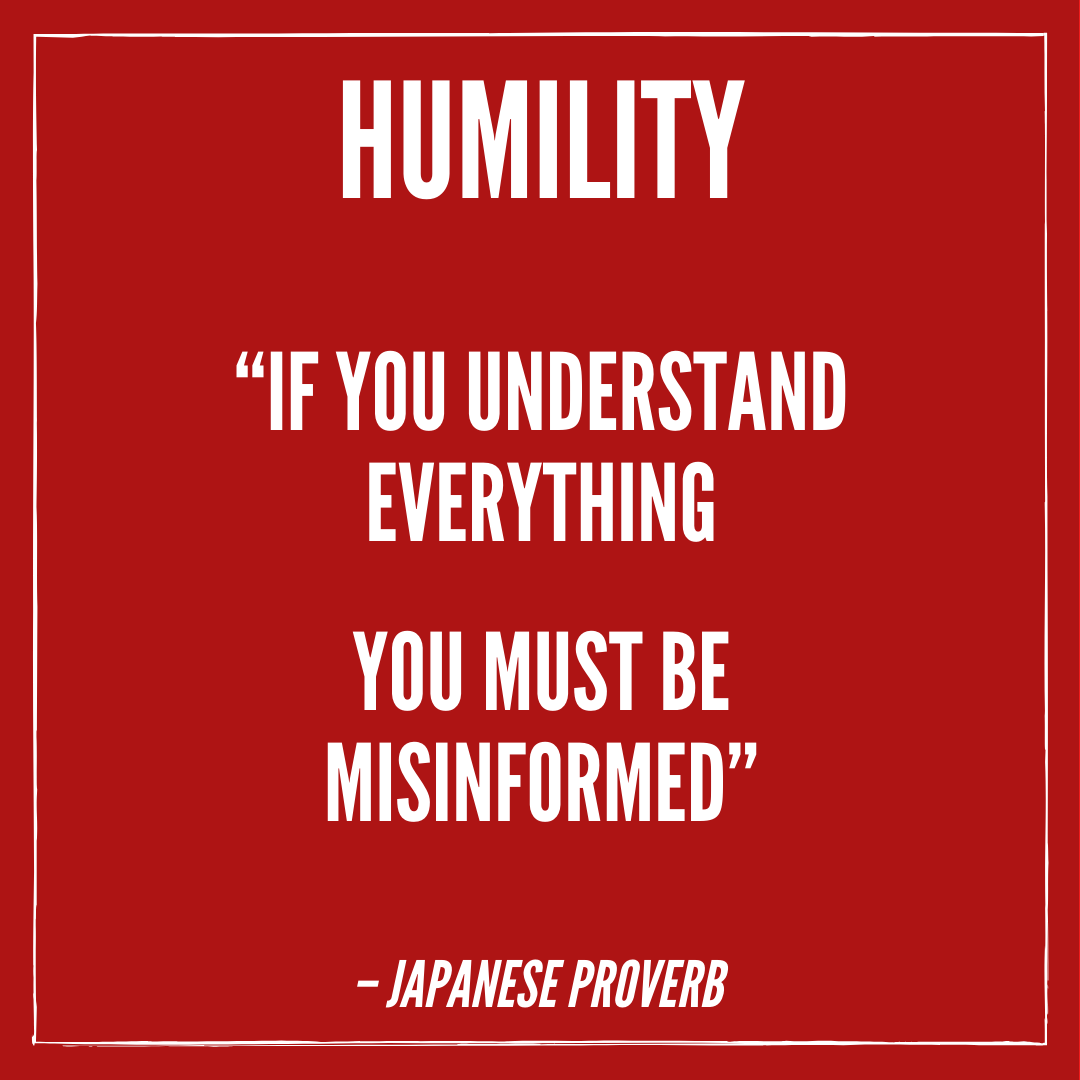Humble Leaders Invite Diversity of Thought
As leaders, we can fall into the trap of thinking we need to have all the answers. Sometimes, it feels like we are expected to know exactly what to do, all of the time.
Yet, the opposite is often true. Most leaders don’t have all the answers. And in fact, it’s often those leaders who have the humility to acknowledge that, and who actively try to learn from those around them, who ultimately have the biggest impact and the most loyal team.
Being humble as a leader is crucially important in creating a culture of courage, which in turn fosters positive change and innovation. It is also one of the key ways to empower your team, and to make them feel their contribution is valuable and important.
In other words, humility is what makes the difference between having followers because they have to, and having followers because they want to.
How to Be Confidently Humble
It’s easy to confuse humility with insecurity. Some leaders might wonder whether they’re even fit to lead if they don’t have all the answers—or at least seem like they do. They might believe that showing their limitations will be interpreted as weakness, and damage their authority.
There are some environments where such concerns might be valid. For instance, you don’t want a military commander who doesn’t know how to lead their troops into battle. Yet, even for leaders in such deeply hierarchical environments, taking other people’s perspectives into account is useful at times. The most successful leaders, military or otherwise, didn’t get to that position by systematically ignoring the ideas of those around them.
Openly discussing your limitations and inviting other people’s input is quite the opposite of weakness. Being able to have your ideas challenged, in many ways, is the ultimate show of confidence.
So how to do this in practice? For our book, Brave Leaders: Finding The Guts To Make Meaningful & Lasting Change, we interviewed a collection of brave leaders around the world. Many of them showed the courage to be humble, and their stories provide some valuable examples of how to demonstrate humility in our daily jobs.
Invite Feedback and Diversity of Thought
When Alison Brimelow was appointed to President of the European Patent Office, after holding the same position at the UK Patent Office, she was aware of the challenges of being an outside appointee. Rather than trying to overcome that challenge by ruling with force, she instead decided to truly connect with her new team and make them feel like they were an important part of her potential success. The best way to do that? Ask them for their input and ideas.
As she told us: “I made myself very visible. In my first year or so, I gave the opportunity to everybody (7,000 people) to spend time in a small meeting with me. It was called ‘Educate the President.’”
One way to make sure you have access to different points of view is by building a diverse team. Edward G. Happ, who has led teams in business, academia, and non-profits, told us: “I always wanted to have [different] types of people on my team, because otherwise everybody was going to end up becoming mirror copies of me, which would also mean that I’d have to be right all the time!”
Look in the Mirror
Asking for feedback is one thing. Actually being willing to hear bad news is something else. And then convincing your team of that, is quite another thing yet.
Stephen Quest’s story in Brave Leaders provides a great example. A lifetime civil servant, Stephen Quest told us about a transformational process he led when running the European Commission’s IT department. Initially, the project seemed very successful.
“We made quite a lot of progress,” Quest told us. “And at that point, the narrative that was coming out was ‘We’re making great progress.’ And I was telling the story and I was writing a lot of blogs and saying, ‘We’re doing great, the feedback is good, and our reputation is rising.’”
However, as Quest said, “when I was talking to people, I was getting this vibe in the organization that there was an undercurrent of things they still weren’t happy about. I was getting a little bit caught up in my own hubris and ignoring this undercurrent while just telling this happy story.”
The happy story wasn’t necessarily wrong, but it certainly wasn’t the full story, and it took Quest a painstaking process of fully uncovering the problems that people were still experiencing.
This example illustrates how hard it can be to get the right feedback. It also shows that it partly depends on convincing people – and yourself – that you’re actually open to hearing criticism and will do something with it.
Cultivate Your Own Humility
We have discussed before how to successfully create a culture that values feedback. You can download our tip sheet with 10 best practices for creating a culture of feedback here.
In addition to those lessons, there are multiple things you can do for yourself that will help you show humility and genuinely invite feedback. We’ll highlight two of them.
First, get used to taking an honest look in the mirror. Alison Brimelow uses a brilliant metaphor in Brave Leaders: “There are two ways of looking in a mirror. One is to look in it to admire yourself, and the other is to look in it and say, ‘I could have done this differently.’ There’s also the matter of whether you look in the mirror at all. Just because you don’t look in the mirror doesn’t mean there’s no spinach between your teeth!
“I think, looking in the mirror to check whether you’ve got spinach between your teeth is better than not looking in the mirror and hoping you have no spinach between your teeth.”
Second, consistently make an effort to recognize the value in what others have to contribute. We’d like to finish this post with an exercise from Brave Leaders:
Make a list of the people with whom you work most closely – those who report to you, those you report to, team members, or other stakeholders. For each person you listed, ask yourself what values you think they hold and why you think they hold them (observed behaviors, assumptions, known fears?). If you list values different from your own, how might these values enrich or enhance your workplace? How might your team or division proactively draw on this diversity moving forward?
Once it’s done, review your list and choose one person whose values seem most different from yours. Arrange to have a conversation with this person with no objective other than to understand their general point of view. Prepare for this discussion by taking a few moments to tap into your own curiosity. What is it that you really want to understand about this person? Ask them.
Inspired by these short stories? Read our book, Brave Leaders: Finding The Guts To Make Meaningful & Lasting Change for the complete interviews with Alison Brimelow, Edward G. Happ, Stephen Quest, and many others, as well as additional reflective exercises to cultivate the brave leaders within yourself.

